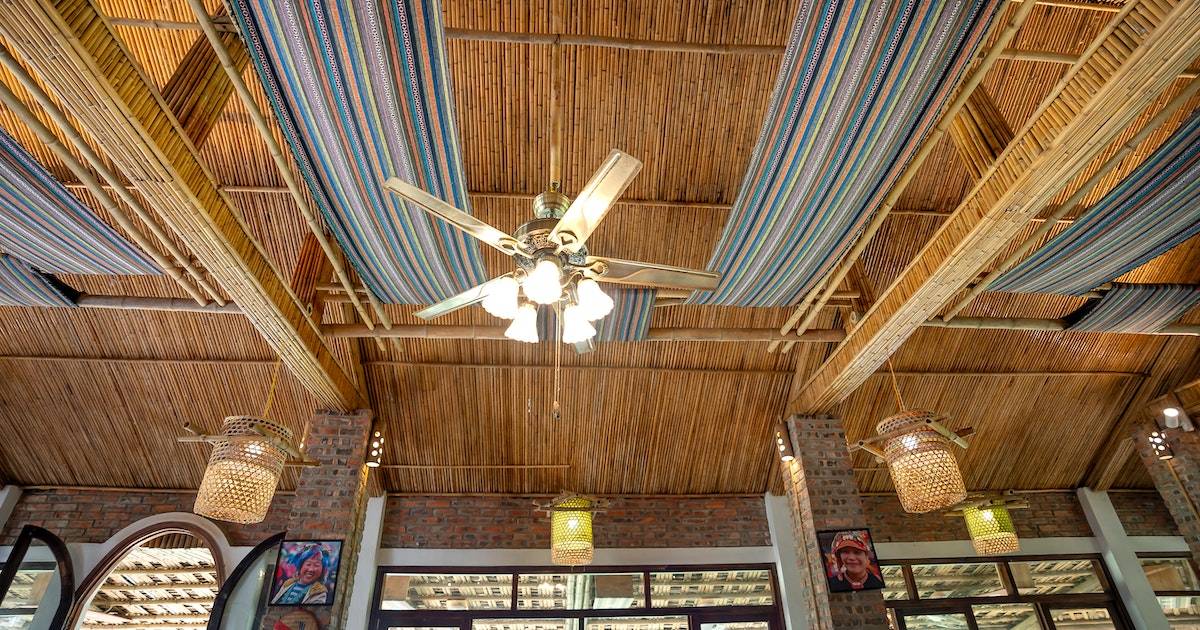Fabric ceilings have significantly increased in popularity in recent years among interior designers.
This trend can be attributed to the rising demand for distinctive and creative methods to improve the appearance and usefulness of interior spaces. this is the ultimate guide to fabric ceilings.
Fabric ceilings provide a unique and fashionable substitute for conventional plaster or painted surfaces, opening up a world of artistic possibilities.
Fabrics have the ability to absorb sound, which can help lessen echoing noise and improve a room’s overall acoustics. This is especially useful in places where noise control is crucial, like theatres, conference rooms, or eateries.
Fabric ceilings also give a room texture and visual interest. They offer a chance to incorporate softness, patterns, and colors that can enhance the overall interior design scheme.
This ‘The Ultimate Guide to Fabric Ceilings’ blog post’s goal is to motivate readers with imaginative fabric ceiling ideas that can help them create individualized, inviting spaces.
Choosing the proper material of Fabric
It’s crucial to take into account the unique qualities of various materials when choosing fabric for a ceiling. Several of the fabrics frequently used for fabric ceilings are listed below:
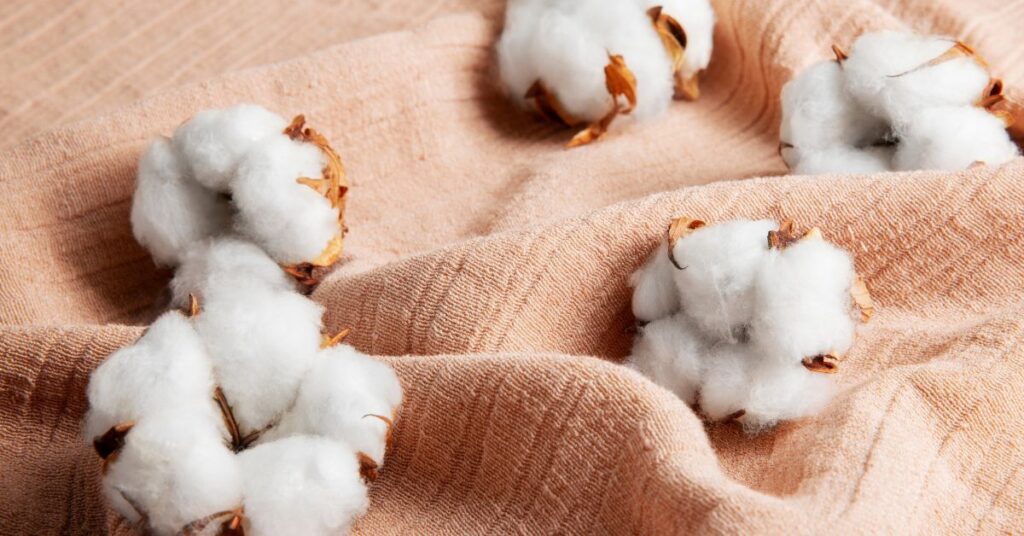
Cotton: is a light, adaptable fabric that is widely available. It is appropriate for a variety of ceiling applications because it is lightweight, breathable, and simple to work with.
Its many different hues and patterns give designers a lot of design freedom.
They work well for establishing a laid-back atmosphere in rooms like bedrooms or living rooms. Contemporary, bohemian, or rustic interior designs all complement cotton well.
Linen: A natural fabric known for its strength and opulent appearance is linen. It gives a ceiling depth and visual interest because of its textured, slightly coarse feel.
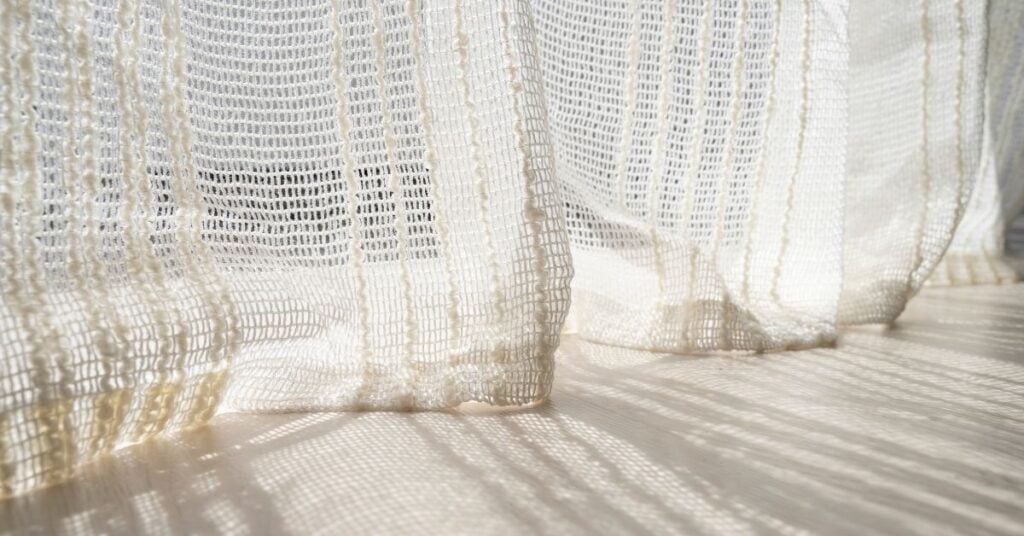
Given that linen fabrics come in a wide range of neutral tones, they can be used to create an elegant and timeless look.
They are long-lasting, moisture-absorbent, and pill-resistant. Modern farmhouse, coastal, or Scandinavian design styles all work well with linen ceilings to give a room a sense of sophistication.
Silk: is a pricey, lustrous fabric with a touch of class. It has a soft, smooth texture that gives any room a hint of opulence.
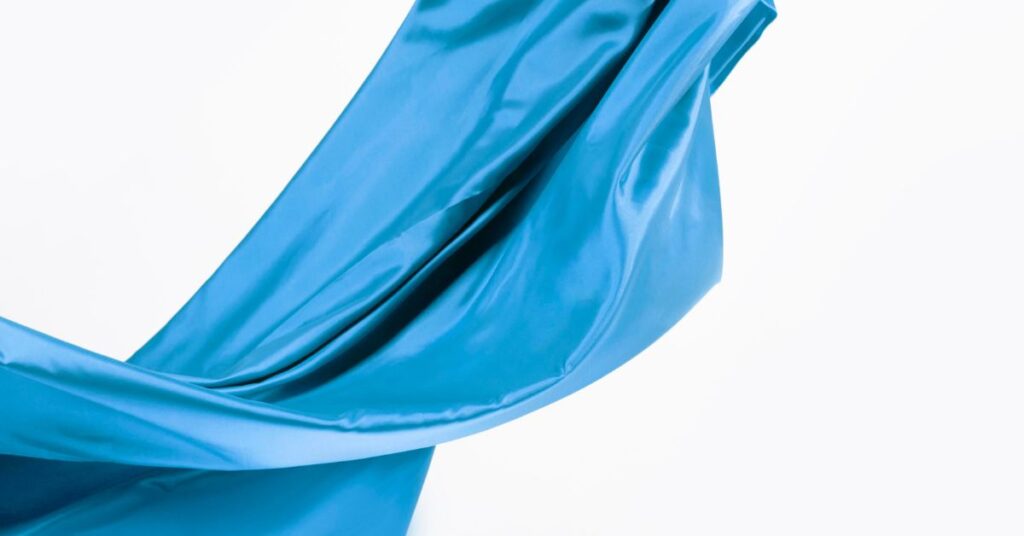
Silk fabrics are perfect for creating dramatic and striking ceiling designs because they come in such a wide variety of colors and patterns.
They give any room a dash of glitz and refinement. Particularly suitable for formal settings like dining rooms or opulent lounges are silk ceilings.
Suggestions for choosing the right fabric
Consider the fabric’s durability, particularly in areas with heavy traffic. Select fabrics that have a strong tensile strength and are stain- and fade-resistant.
Choose a fabric color that goes well with the room’s overall color scheme. Darker colors can produce a cozy and intimate ambiance, while lighter colors can make a space feel more open and airy.
Texture: Take into account the fabric’s texture and how it contributes to the intended aesthetic. While textured fabrics like linen add visual interest and a tactile element, smooth and sleek fabrics like silk can create a more formal appearance.
Maintenance: Consider the fabric’s cleaning specifications. Particularly for areas prone to spills or dirt, it is preferable to use fabrics that are simple to clean or can be spot cleaned.
Your actions can choose the right fabric for the ceiling by taking into account elements like durability, color, and texture, ensuring that it not only improves the room’s aesthetic appeal but also serves its functional needs.
Stretch Fabric Ceilings
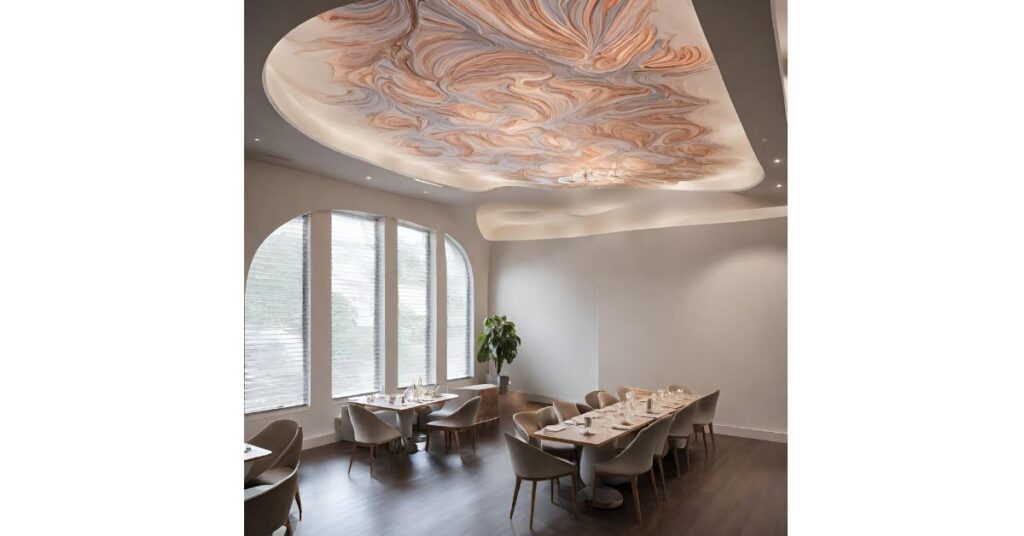
Stretch fabric ceilings are a cutting-edge and contemporary method of designing ceilings.
They entail installing a fabric membrane that is tightly stretched across a frame to produce a seamless surface.
Stretch fabric ceilings offer the following benefits:
Flexibility: Stretch fabric ceilings provide countless design options. Regardless of the size, complexity, or shape of the space, they can be tailored to fit it.
You can create a variety of looks with the wide selection of fabric options available, from plain and minimalist to daring and creative.
Benefits for acoustics: Stretch fabric ceilings are very good at absorbing sound. The fabric membrane enhances a room’s acoustic performance by lowering noise reflections.
They are thus especially well suited for environments where sound control is crucial, like theatres, recording studios, or conference rooms.
Stretch fabric ceilings make it possible to seamlessly integrate lighting fixtures. Behind the fabric, LED lights can be mounted to produce a diffused lighting effect.
This gives the area a more contemporary and streamlined appearance by generating an aesthetically pleasing atmosphere and obviating the need for conventional ceiling lights.
How to stretch fabric ceilings are installed
Construction of the frame: Aluminium or PVC profiles are used to build a frame around the ceiling area. The fabric is kept in place and supported by the frame. It can be altered to fit the space’s various shapes and architectural features.
Tensioning system: To stretch the fabric tautly across the ceiling surface, a tensioning system is installed within the frame. Typically, this system consists of clips or tracks that keep the fabric firmly in place. The tensioning system guarantees a smooth, taut appearance.
Fabric installation: The fabric membrane is carefully cut and stretched over the frame after being chosen based on the desired aesthetics and acoustic qualities. Since it is connected to the tensioning system, the tension is distributed uniformly over the entire surface. A seamless finish is achieved by trimming the extra fabric and hiding it inside the frame.
Various stretch fabric ceiling patterns and designs
Stretch fabric ceilings come in a variety of design options to match different tastes and styles. Popular patterns and designs include:
Solid color: A sleek and contemporary design that uses a single color of fabric.
Custom prints or patterns can be applied to the fabric, enabling the creation of distinctive and creative ceiling designs. This might include abstract art, motifs drawn from nature, or geometric shapes.
Translucent ceilings: Using fabric that is partially transparent or backlit produces a distinctive effect by allowing light to pass through it and produce a soft glow. When diffused lighting and visual interest are desired, this design is frequently used.
Detailed directions for putting up a stretch fabric ceiling
Here is a general description of the installation procedure:
- Calculate the required frame’s dimensions by measuring the area of the ceiling.
- Build the frame from aluminum or PVC profiles, making sure it has the desired size and shape.
- Install the tensioning components, such as tracks or clips, inside the frame, making sure they are firmly fastened.
- Leave enough room when cutting the fabric membrane to allow for stretching and attachment to the tensioning system.
- Make sure the fabric is evenly stretched across the entire ceiling surface before beginning to attach it to the tensioning system.
- Stretching and attaching the fabric as you go around the frame will ensure that it is smooth and properly tensioned.
- To achieve a seamless finish, trim any extra fabric and tuck it away inside the frame.
- It is essential to speak with experienced installers who can give specific instructions and guarantees.
Fabric Draping Techniques

A flexible and affordable method for giving ceilings texture, drama, and visual interest is fabric draping. It enables creative freedom and can be adjusted to fit different design themes and styles. Fabric draping offers countless options for transforming your ceiling, whether you want to produce a chic canopy effect or a relaxed swagged look.
Swags: Swag draping involves suspending fabric from the ceiling in elegant folds or curves. This method gives a room an air of elegance and softness. Swags can either be arranged asymmetrically for a more dynamic and artistic effect, or symmetrically along the ceiling.
Canopies: By suspending fabric from the center of the ceiling and extending outward in a circular or rectangular shape, canopy draping creates a romantic and ethereal atmosphere. To create a warm and inviting atmosphere, this method is frequently applied in bedrooms, nurseries, or event spaces.
Pleated draping: involves folding the fabric into clean pleats to give an outfit a tailored, structured appearance. Pleats can be positioned in a straight line or gathered together to create a more complex pattern. This method lends a sense of sophistication and refinement to formal settings.
Guidelines for constructing various draping designs
Swags:
- Determine the fabric’s length for each swag. To achieve the desired drape effect, add extra length.
- Place hooks or brackets where you want the swags to hang on the edges of the ceiling.
- Beginning on one side, drape the fabric over the brackets or hooks, allowing it to take the form of gentle folds or curves.
- Secure the fabric in place by attaching it to the hooks or using decorative elements like ribbons, tassels, or clips.
Canopies:
- Determine the canopy fabric’s required length and width. Consider the desired size and shape of the canopy.
- Install a ceiling hook or other appropriate hardware at the center of the ceiling.
- Hang the fabric from the hook in the ceiling, letting it hang down to create the desired canopy shape.
- Using hooks or ties, fasten the fabric along the edges, ensuring that it hangs evenly and produces a smooth canopy effect.
Pleats:
- Determine the length of fabric required for the pleated draping. Think about the desired pleat width and spacing.
- Ensure the fabric is crisp and uniformly folded into evenly spaced accordion-like pleats.
- Adhesive strips, fabric clips, or hooks can be used to firmly fasten the pleats at the top and bottom.
- Hang the pleated fabric from the ceiling, making sure it hangs straight and the pleats stay in place.
Suggestions for selecting coordinating textiles and color schemes
Take into account the room’s overall design aesthetic and color scheme. Select fabrics that enhance or complement the decor already in place.
Choose fabrics with various textures or patterns to create visual depth and interest.
Try different color combinations to achieve the desired atmosphere or mood. Bold and vibrant colors can make a statement and add energy to the space, while soft pastels create a calm and serene atmosphere.
Mixing and matching fabrics is a great way to create a distinctive and personalized look. To create the desired effect, experiment with various materials such as satin, velvet, or sheer fabrics.
You can make gorgeous fabric ceiling drapes that enhance the aesthetics of your space by choosing the appropriate draping technique, taking precise measurements, and selecting complementary fabrics and colors.
Fabric Ceiling Panels

Fabric ceiling panels offer a distinctive and modern method of designing ceilings. They are made up of fabric-covered panels that are mounted on the surface of the ceiling to produce an attractive and textured effect.
To any room, fabric panels bring coziness, depth, and a hint of luxury. They can be used to draw attention to a particular area in a room or to improve the overall design scheme.
A variety of panel styles for fabric ceilings:
- Square fabric ceiling panels offer a crisp, geometric appearance. For rooms with a contemporary design aesthetic, they offer a modern and minimalist aesthetic.
- Rectangular ceiling panels can visually lengthen a room by giving the impression of elongation. They are frequently used to add architectural interest to rooms with high ceilings.
- Custom-designed fabric ceiling panels can be made to fit particular architectural details or produce particular visual effects. These unique forms allow for countless variations in terms of creativity and personalization, from organic curves to complex patterns.
Fabric ceiling panel construction
Frame construction: Wooden frames or frames made of lightweight materials like aluminium or PVC are frequently used to support fabric ceiling panels. The frame gives the fabric structure and support, resulting in a smooth and taut appearance.
Attaching the fabric: The fabric is tightly stretched over the frame and fastened there. It can be fastened with staples, glue, or a fabric adhesive. To reduce wrinkles and guarantee a clean finish, the fabric should be pulled taut.
Installation of the panel: Depending on the design and construction, there are various methods for installing fabric ceiling panels. They can be suspended from the ceiling using hooks or other suspension systems or fixed directly to the surface of the ceiling. For the panels to stay in place and not sag or move, they must be securely installed.
Instructions for making fabric ceiling panels in detail
Please be aware that installing fabric ceiling panels may require advanced DIY abilities or outside help. Here is a general description of what happens:
The fabric ceiling panel’s desired size should be measured. Consider the available space as well as the overall design concept.
Make sure the wooden frame or lightweight material is strong and accurate by cutting it to the measured dimensions.
Stapling, glue, or a fabric adhesive can be used to fasten the fabric to the frame. Secure one side first, then secure the other sides while pulling the fabric taut.
Trim away any extra fabric to leave a crisp, even edge.
Based on the panel design and the ceiling structure, choose the installation strategy. Install hooks or suspension systems securely on the ceiling surface if using them.
Install the fabric ceiling panel on the ceiling, making sure it is straight and level. If using specific hardware or installation techniques, adhere to the manufacturer’s instructions.
If more fabric ceiling panels are needed, follow the same procedure, being sure to maintain uniformity in the size, fabric, and installation.
To ensure a successful and secure installation process, it is advised to consult with professionals or adhere to comprehensive tutorials tailored to your chosen fabric ceiling panel design.
DIY Fabric Ceiling Tiles
A unique and individualized way to improve the appearance of your ceiling is with fabric-covered ceiling tiles. They entail covering conventional ceiling tiles with fabric to update the look of your room and add texture, color, and your own sense of style.
Fabric ceiling tiles present a special chance to change the aesthetics of your ceiling while preserving the functional advantages of conventional ceiling tiles.
Advantages of ceiling tiles:
Installation is simple: Fabric-covered ceiling tiles are frequently lightweight and can be mounted with adhesive or other methods with ease. They are simple DIY project that needs few tools and abilities.
Versatility: The range of sizes, shapes, and textures available in ceiling tiles allows for a wide range of design possibilities. You can alter the appearance of your ceiling to match your desired aesthetic by covering them with fabric.
Acoustic properties: By absorbing sound and lowering echoes in a space, ceiling tiles are intended to enhance acoustic performance. Fabric coverings can add a decorative touch and improve these qualities.
Guidelines for fabric-covering ceiling tiles
The fabric of your choice, ceiling tiles, fabric adhesive, scissors, measuring tape, and a paintbrush or roller are the materials you will need to gather.
Measure the size of your ceiling tile and add a few inches on each side to allow for wrapping the fabric around the edges. Make the appropriate fabric cuts.
Apply adhesive: Use a fabric adhesive appropriate for the type of fabric you have decided on. To completely cover the front side of the ceiling tile, evenly spread the adhesive over it.
To attach fabric, carefully lay it on top of the adhesive and smooth out any creases or bubbles. To ensure a solid bond between the fabric and the tile, press down firmly.
Wrap edges: Fold the extra fabric around the tile’s edges, then tape or use adhesive to attach it to the back. For a tidy finish, trim any extra fabric.
Repeat for the remaining tiles to ensure consistency in the selection and application of the fabric.
Ingenious ways to personalize fabric-covered ceiling tiles
Stenciling: To decorate your fabric-covered ceiling tiles with patterns or designs, use stencils and fabric paint. This enables customization and can produce a distinctive ceiling focal point.
Consider adding decorative stitching or embroidery designs to your fabric if you are skilled at embroidery or needlework. Your ceiling tiles will gain texture and elaborate detailing as a result.
Try your hand at fabric applique by gluing tiny scraps of fabric or fabric motifs to your fabric-covered ceiling tiles. This can add visual interest and give the appearance of three dimensions.
Mixing and matching: Experiment with various fabric textures, colors, and patterns to produce an eclectic ceiling that is visually appealing. To create a distinctive and individual look, combine solid colors with prints or play around with contrasting fabrics.
Allow your creativity to soar and experiment with various techniques that complement both your individual taste and the overall theme of your space when customizing fabric-covered ceiling tiles.
Maintenance and Care
Fabric ceilings must be maintained and cleaned regularly to keep looking good and last a long time. The following are some general principles:
Dust the fabric ceiling on a regular basis with a microfiber cloth or a soft brush attachment on a vacuum. This keeps the fabric looking clean and helps prevent dust accumulation.
Gentle spot cleaning: Dilute a mild detergent in water and use it to clean up minor spills or stains. Use the solution to lightly blot the stained area after dabbing a clean cloth or sponge into it. Rub gently; vigorous rubbing can harm the fabric. To make sure the cleaning agent won’t result in any discoloration, test it first on a small, discrete area.
Professional cleaning: If there are stubborn stains or if your fabric ceiling needs a deeper cleaning, think about hiring an upholstery or fabric cleaning service. They are equipped with the knowledge and tools necessary to effectively handle delicate fabrics and remove tough stains.
Suggestions for fabric care and stain removal
Immediate action: Remove stains as soon as possible to avoid having them soak into the fabric. To remove extra liquid, gently blot the stain with a clean, absorbent cloth or paper towel. Rubbing could force the stain deeper into the fabric fibers, so refrain from doing so.
Test cleaning products: To make sure a cleaning product won’t damage or discolor your fabric ceiling, use it on a small, discrete area first. Observe the directions and suggestions provided by the manufacturer.
Abrasive cleaners, bleach, and other harsh chemicals should be avoided because they can harm the fabric and change the way it looks. Use only mild, delicate cleaning agents made for fabrics or upholstery.
Dry cleaning: It might be necessary to hire a professional to clean some fabric ceilings. To find out if dry cleaning is suggested for your particular fabric, check the manufacturer’s instructions or speak to a professional cleaner.
Conclusion
In this blog post, we’ve looked at the expanding popularity of fabric ceilings in interior design and talked about all the advantages they provide.
We investigated different ceiling fabric options, such as lightweight cotton, linen, and silk, and highlighted their qualities and suitability for various styles and purposes.
Additionally, we looked at fabric ceiling panels, fabric-covered ceiling tiles, and soundproofing issues. We also offered advice on upkeep and maintenance, presented motivational pictures and real-world examples, and urged readers to be imaginative and apply the concepts to their own spaces.
Remember that fabric ceilings give you the ability to design an incredibly unique and inviting space that reflects your personal taste and improves the ambiance. So, let your creativity soar and make fabric ceilings the focal point of your subsequent interior design undertaking.
FAQ: The Ultimate Guide to Fabric Ceilings
Can fabric ceilings be used to improve energy efficiency?
Yes, fabric ceilings can contribute to improved energy efficiency.
Are there any limitations to using fabric ceilings?
Fabric ceilings may require periodic cleaning or maintenance, especially in high-traffic areas.
Can fabric ceilings be combined with other ceiling features?
Yes, fabric ceilings can be combined with other ceiling features to create a unique and dynamic look.
Are fabric ceilings suitable for all ceiling heights?
Fabric ceilings can be adapted to various ceiling heights.
Are fabric ceilings easily removable or changeable?
The ease of removing or changing fabric ceilings depends on the specific installation method used.
ALSO READ:
